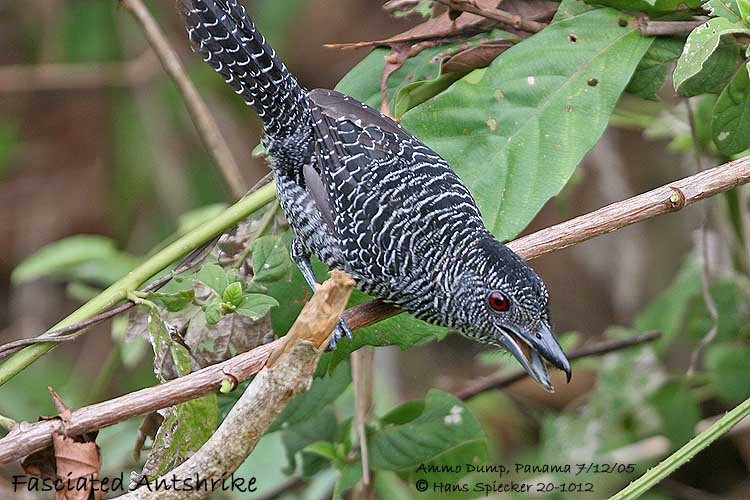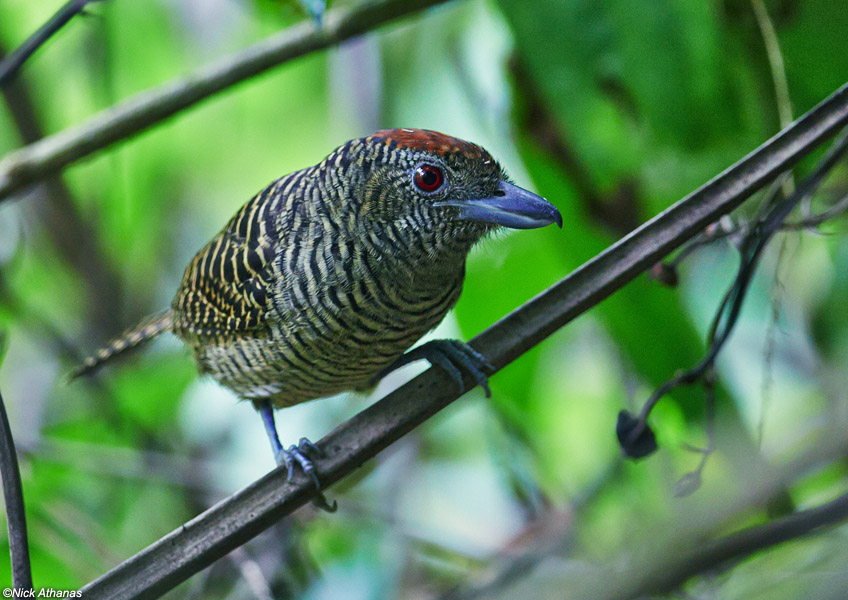
Cymbilaimus lineatus
TAXONOMY
Cymbilaimus lineatus Leach, 1814.
OTHER COMMON NAMES
English: Bamboo antshrike; French: Batara fasciй German:
Zebra-Ameisenwьrger; Spanish: Batarб Franjeado.
PHYSICAL CHARACTERISTICS
7 in (17–18 cm); heavy hooked bill and red iris.
DISTRIBUTION
Southern Central America and north-central South America;
from Honduras to Panama, and in Venezuela, Colombia,
Ecuador, Guyana, eastern Peru, northern Bolivia, and western
Amazonian Brazil.
HABITAT
Typically below 3,300 ft (1,000 m) in humid tropical forest;
vine-tangled and shrubby borders of streams and rivers and
tree-fall openings in intact forest; also, mature secondary forest.
BEHAVIOR
Nonmigratory, territory-defending pairs forage widely at various
levels of a dense forest canopy. Song is a series of 6–8 soft,
repeated whistles.
FEEDING ECOLOGY AND DIET
Feed in dense foliage on insects and other arthropods.
REPRODUCTIVE BIOLOGY
Monogamous pairs bond for life, typically lay two eggs, and
share incubation and care of nestlings and fledglings.
CONSERVATION STATUS
Not threatened. Locally widespread and abundant.
SIGNIFICANCE TO HUMANS
No direct significance, except for the indirect economic benefits
of bird-watching and ecotourism.
Photo Gallery of - Fasciated antshrike




 Animalia Life
Animalia Life